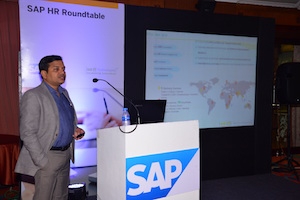Eleven SAP employees from around the world have just completed a month-long social sabbatical assignment in Chennai, helping four non-profit organisations develop best practices and operational efficiencies.
The project was part of an ongoing SAP social investment program offering much-needed business expertise to non-profits as well as leadership experience to key employees.
As of 2015, a total of 221 SAP employees from 36 nations had donated more than 75,000 pro-bono service hours to 71 organisations worldwide through the SAP Social Sabbatical program.
In the latest round of the program, SAP employees from Australia, China, Czech Republic, United Arab Emirates and the US brought their expertise in project management, data management, HR and marketing to assist Bhumi, Hand in Hand, Villgro Innovations Foundation and Arunodhaya.
“Employees participating in SAP’s Social Sabbatical program get an opportunity to solve business challenges for the entrepreneurial or education sector in emerging markets, while developing leadership, cross-cultural as well as entrepreneurial skills and mindset,” said Dilipkumar Khandelwal, managing director, SAP Labs India Pvt Ltd.
“This initiative is helping SAP strengthen strategic social investments in key markets,” he said.
“We thank SAP for helping us define and align our communications internally and crafting a marketing and communications plan for an external audience,” said Dr. Prahalathan, co-founder, Bhumi.
“Before our partnership with SAP Social Sabbatical, our internal and external processes lacked some systems and implementation methodology,” said PR Ganapathy, president (India), Villgro.
“We were struggling with an IT system that couldn’t meet our needs. It resulted in inefficiencies, duplications of effort and unnecessary, time-consuming manual effort,” said Virgil D’Samy, CEO, Arunodhaya. “Collaborating with SAP helped us in implementing comprehensive data management plans after a critical review with proper recommendations.”




